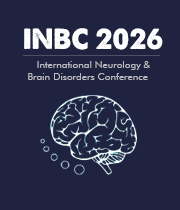Title : Antithrombotic strategies for the secondary prevention of ischemic stroke: A systematic review and network meta-analysis
Abstract:
Background: The optimal antithrombotic regimen for secondary stroke prevention remains debated due to trade-offs between ischemic recurrence and bleeding risk. We conducted a network meta-analysis (NMA) comparing antiplatelets, vitamin K antagonists, and direct oral anticoagulants (DOACs) in patients with prior ischemic stroke or TIA.
Methods: We conducted a systematic review and network meta-analysis per PRISMA guidelines. Searches in PubMed and Cochrane identified 25 RCTs—9 on antiplatelets and 16 on anticoagulants for secondary prevention. Quality was assessed using the Cochrane Risk of Bias. Pooled HRs were estimated using a random-effects model. Publication bias was assessed via funnel plot and Egger’s test. A frequentist NMA estimated hazard ratios (HRs), with Surface Under the Cumulative Ranking Curve (SUCRA) rankings used to assess performance. A matrix plot illustrates stroke recurrence vs. major hemorrhage risk.
Results: Efficacy (Stroke Recurrence): Apixaban (SUCRA: 91%) and Dabigatran (110/150 mg) (SUCRA: 87%) significantly reduced recurrence risk across multiple trials. Clopidogrel and aspirin-dipyridamole were superior to aspirin alone but less effective than DOACs. Asundexian, a novel Factor XIa inhibitor, was inferior to apixaban (HR 3.79; 95% CI, 2.46–5.83). Short-term DAPT (≤21 days) reduced stroke recurrence by 26% compared to aspirin (HR 0.74; 95% CI, 0.61–0.88), while long-term Dual Antiplatelet Therapy (DAPT) had no added benefit (HR 1.20; 95% CI, 0.92–1.57).
Safety (Major Bleeding and ICH): Apixaban had the most favorable bleeding profile (major bleeding HR ~1.13; ICH HR ~0.85). Rivaroxaban and Edoxaban showed higher ICH risk (e.g., NAVIGATE-ESUS ICH HR 4.02). Short-term DAPT showed modest bleeding risk (HR 1.86; 95% CI, 0.87–2.85), while prolonged DAPT increased bleeding (HR 1.20; 95% CI, 0.91–1.58).
All-Cause Mortality: No regimen significantly reduced mortality. Warfarin was associated with increased risk (WASID HR 2.33; 95% CI, 1.19–4.59), while DOACs trended favorably (e.g., edoxaban HR 0.86; 95% CI, 0.77–0.97).
Conclusions: Apixaban and dabigatran are preferred options for balancing efficacy and safety. Short-term DAPT may be beneficial in early high-risk periods but not beyond. Newer agents like asundexian require further validation. Long-term DAPT and warfarin in ICAD may increase harm and should be used cautiously.




